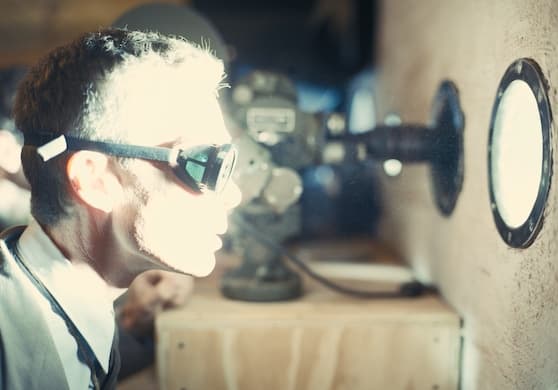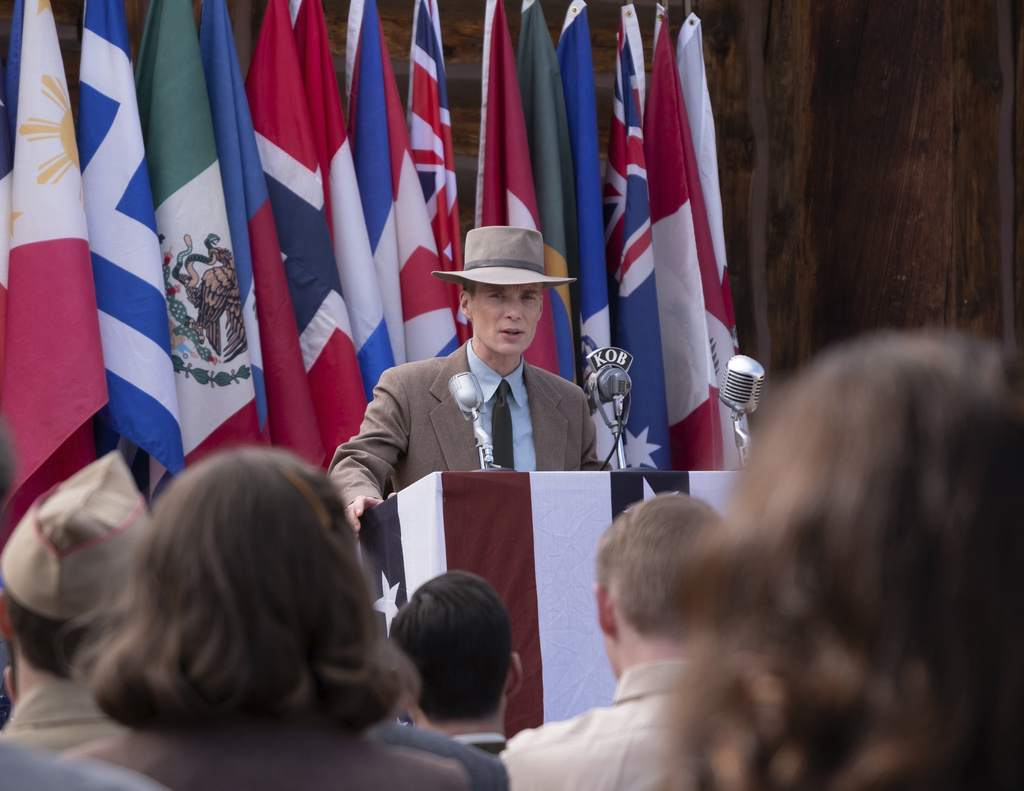‘Oppenheimer’ Detonates in Theaters
One can only hope the film keeps pace with ‘Barbie’, its cinematic fellow-traveler.

“Oppenheimer” is an atomic smash, a big-budget equation that manages just enough variables to ensure a summer blast radius that, one can only hope, keeps pace with “Barbie,” its cinematic fellow traveler. Quantum physics meets Cold War politics in director Christopher Nolan’s latest, which feels like a fusion reaction between John le Carré’s “Tinker, Tailor, Soldier, Spy” and Stephen Hawking’s “A Brief History of Time.”
“Oppenheimer,” a $100 million production from Universal Pictures, is an adaptation of “American Prometheus,” a door stopper of a biography from Kai Bird and Martin Sherwin that snagged a Pulitzer Prize. The reference is to the Greek titan who gave mankind fire, only to be punished for all eternity. The analogy is to Oppenheimer, who after directing the Manhattan Project had his security clearance stripped for left-wing associations.
The movie, which weighs in at three hours, cuts between stretches of Oppenheimer testifying before the Atomic Energy Commission Personnel Board — it voted to deny his clearance by a 2-to-1 margin, in 1954 — and the physicist’s rise from a Jewish family of means on the Upper East Side to someone Mr. Nolan told CBS is “the most important person who ever lived.” Cillian Murphy’s Oppenheimer is a brooding existentialist with a dash of sexy élan.
Mr. Nolan, who has figured out the formula for making blockbusters with a heartbeat, elegantly contrasts Cold War grays and beiges — the stuff of old microfilms — with gorgeous depictions of shimmering galaxies, ravenous black holes, and blooming bombs that, at least in IMAX 70 mm, can tempt you to yell “fire” in a crowded theater. The director’s camera clicks between a telescope and microscope. And then the bomb goes off.
Mr. Nolan also finds inspiration at Los Alamos, here captured before it became the birthplace of the bomb. A tract of land owned by Oppenheimer, the film captures its full and desolate gorgeousness, a land of plains, Indian burial grounds, and American expansiveness that called Oppenheimer back from his inter-war years in Europe, where the film has him meditating on Pablo Picasso’s Blue Period and reading T.S. Eliot.
If cubism and literary modernism attracted Oppenheimer, quantum physics consumed him, and we are shown a gaunt-looking Mr. Murphy in Old World lecture halls, taking in the koanic wisdom of Niels Bohr and Werner Heisenberg, who were themselves dissenting disciples of Albert Einstein, here played as something of a Buddhist rabbi by a Scottish actor, Tom Conti. Oppenheimer brought that continental brand of avant-garde physics to CalTech and Berkeley, where he taught.

In California, Oppenheimer falls in with a crowd pulsing with the ideas of the old left, still magnetized to the Soviet project. His brother was a party member, and so are his friends and a lover, Jean Tatlock, here played by Florence Pugh with throbbing intensity — ideological and otherwise. The Spanish Civil War is on, and unionization is afoot. Oppenheimer notes that he read “Das Kapital” in German, but is intrigued rather than indoctrinated.
Nazi Germany invades Poland on the same day Oppenheimer publishes a paper called “On Continued Gravitational Contraction” — effectively predicting black holes — and suddenly physicists are in demand beyond the faculty lounge. General Leslie Groves, played here with puckish exasperation by Matt Damon, taps Oppenheimer to direct the Manhattan Project. Like a nerdy Avengers, a group of physicists gathers to build a bomb.
“Oppenheimer” underscores the singular focus but ramshackle execution of this project, which yoked together academics and military brass, theoreticians and the secretary of war, those focused on detonation and others worried about the day after. Mr. Murphy’s wiry frame — like a stretched atom — makes legible those contradictions. He fathers the atomic bomb but opposes the hydrogen one, is wracked with guilt but helps pick targets.
Oppenheimer, who when the bomb worked at Los Alamos famously quoted the god Vishnu in the “Bhagavad-Gita” — “Now, I am become Death, destroyer of worlds” — finds himself undone by the ways the terrain shifts between world war and Cold War. The movie is not kind to his enemies, foremost of whom is Robert Downey Jr. as Lewis Strauss, who, in better days, hired Oppenheimer to run the Institute of Advanced Study at Princeton.
Strauss, though, in his role as chairman of the AEC, turns on Oppenheimer, and through a convoluted set of maneuvers involving J. Edgar Hoover, Senator McCarthy, and other Cold War bigwigs blocks a renewal of his clearance, effectively doing to this secular Jew — the movie is attuned to the Jewish dimensions of theoretical physics and the shadow cast by Auschwitz — what was done to Benedict Spinoza centuries ago. He is excommunicated.
Was there a sin commensurate with the punishment? “Oppenheimer” denies it, allowing that its hero was not entirely truthful about his associations but also painting him as a martyr to Cold War paranoia. Its final image, of an earth consumed by flames, appears to validate his pivot to arms control supervised by international organizations. He hoped the United Nations could be up to the task, and that Joseph Stalin could be brought to reason.
Carl Rollyson, in his review of “American Prometheus” in these pages, reckons that “if Oppenheimer did not lie about his political affiliations and convictions, he was economical with the truth.” Mr. Rollyson gleans that Oppenheimer was “never forthcoming about his relationship with the Communist Party.” This flawed patriot, though, was America’s Atomic Adam. You can’t return the apple to the tree — or unsee the mushroom cloud.

